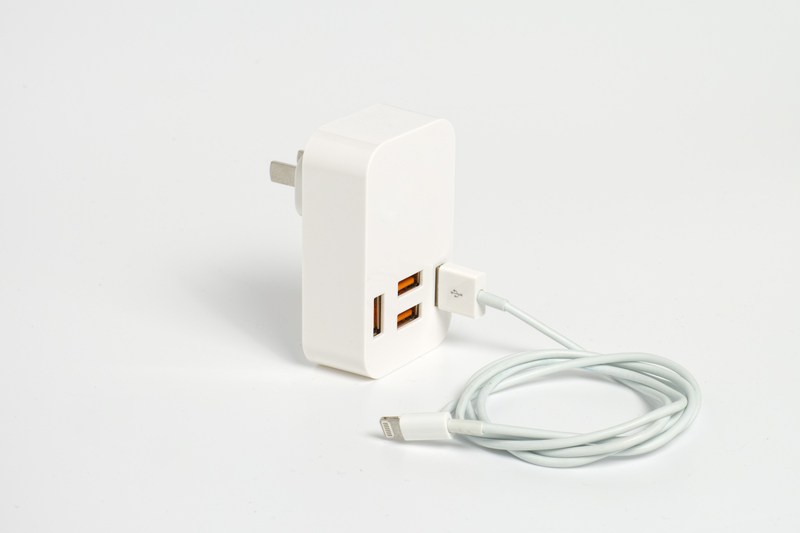How to Smoothly Transition Your Bed and Mattress
Posted on 29/05/2025
How to Smoothly Transition Your Bed and Mattress: The Definitive Guide
Making a seamless transition for your bed and mattress is crucial for preserving comfort, sleep hygiene, and the longevity of your investment. Whether you're upgrading from a twin to a king, moving to a new house, or simply replacing a worn-out setup, there are practical steps to ensure everything goes smoothly. In this comprehensive guide, you'll learn exactly how to smoothly transition your bed and mattress with minimal stress and maximum benefit. Let's dive into the process with actionable advice, expert tips, and answers to common concerns.

Why Transitioning Your Bed and Mattress Deserves Special Attention
Most people underestimate the impact a bed or mattress transition can have on their daily lives. Not only does it affect sleep quality, but it can also influence your health, back support, and even your overall mood. Making an informed, well-planned switch ensures a comfortable sleep environment from day one.
- Health and Wellness: An old or poorly supported mattress can cause aches, allergies, and poor posture.
- Mental Comfort: Familiarity and routine are critical for restful sleep. Any disruption can affect your sleeping patterns.
- Furniture Longevity: Proper transitioning methods keep both your new mattress and bed frame in top condition.
Recognize When It's Time for a Bed and Mattress Transition
- Your mattress is sagging, lumpy, or over 8 years old.
- You wake up with frequent back or neck pain.
- There's a noticeable increase in allergies or respiratory issues inside your bedroom.
- Your bed frame creaks, wobbles, or doesn't properly support your mattress anymore.
- You're moving to a new home and need an upgrade.
Once you've decided it's time to transition your bed and mattress, it's important to handle the process with thoughtful care.
Step-by-Step Guide: How to Smoothly Transition Your Bed and Mattress
Taking the right steps before, during, and after your transition will ensure minimal disruption and optimal sleep quality. Here's an actionable plan to help you achieve a hassle-free bed and mattress changeover.
Step 1: Measure and Plan
- Measure Your Space: Before buying a new mattress or bed, use a tape measure to gauge the dimensions of your bedroom. Allow for walking space and other furniture.
- Confirm Mattress and Bed Sizing: Mattress sizes (Twin, Full, Queen, King, California King) vary. Double-check that your chosen bed frame matches your new mattress.
- Assess Entryways and Hallways: Can your old bed or new mattress fit through doors, staircases, and hallways?
A carefully measured space will prevent frustrating surprises on moving day.
Step 2: Prepare Your Old Bed and Mattress
- Deep Clean the Area: Strip the bed and thoroughly clean your mattress and frame, including under-bed areas.
- Disassemble with Care: Have a screwdriver, wrench, and any necessary tools ready. Take pictures or label screws to ease reassembly if donating, selling, or storing the bed.
- Check for Damage: Look for broken slats, loose joints, or any pest issues before moving your furniture.
Step 3: Safely Remove the Old Mattress and Bed
- Teamwork Matters: Mattresses and bed frames can be awkward or heavy. Enlist a friend or family member to help.
- Protect the Surroundings: Lay down blankets or cardboard to prevent wall or floor scuffs.
- Mattress Disposal: Check local donation programs, recycling centers, or schedule a mattress pickup for safe, eco-friendly disposal.
Step 4: Prepare for the New Bed and Mattress
- Clean and Ventilate: Clean floors, vacuum under the future bed space, and allow time for air circulation before the new setup arrives.
- Unbox with Caution: If your mattress arrives compressed (such as a bed-in-a-box), unroll it on the bed frame. Follow manufacturer instructions for proper expansion and airing out.
- Check All Parts: Verify your new bed frame is complete and undamaged before assembly. Organize new tools and parts to streamline setup.
Step 5: Assemble and Position
- Follow Instructions: Assemble your new bed frame according to the manual. If it's a complex design, search for manufacturer videos to guide you step-by-step.
- Mattress Placement: Ensure your mattress fits snugly and rests on supportive slats or a proper foundation. Avoid sagging areas or weak spots.
- Allow Expansion Time: For memory foam or bed-in-a-box models, allow at least 24-72 hours for the mattress to reach full size and firmness.
Step 6: Optimize for Comfort
- Add Mattress Protectors: Use a waterproof or hypoallergenic protector to shield your investment and promote cleanliness.
- Select the Right Bedding: Choose breathable sheets and cozy blankets that fit your new mattress size for optimal sleep temperature.
- Experiment with Pillow Arrangement: Now's a great time to refresh your pillows, ensuring proper support for side, back, or stomach sleeping positions.
With these steps, you're well on your way to a smooth bed and mattress changeover that maximizes both comfort and mattress longevity.
Expert Tips for a Hassle-Free Bed and Mattress Transition
Moving With a Mattress: What to Know
- Keep It Dry: Invest in a mattress bag or plastic sheeting to protect your mattress from moisture, dirt, and pests during transit.
- Keep It Upright: If possible, move your mattress on its side to prevent bending or folding, unless packed specifically for rolling (e.g., foam mattresses).
- Label Hardware: Use ziplock bags to store screws and small pieces, labeling them for easy reassembly of your bed frame.
Transitioning to a Different Mattress Type
- Memory Foam to Innerspring: Innerspring mattresses are bouncier and may feel firmer. Use a mattress topper for an easier transition.
- Innerspring to Latex Foam: Latex offers more responsiveness. Allow your body a few weeks of adjustment.
- Hybrid Mattresses: Combining foam layers with coils, these beds often require a solid foundation for best support.
Regardless of mattress type, breaking in a new sleeping surface can take up to 30 days. Be patient and give your body time to adapt to the new feel.
Transitioning Kids, Seniors, or Roommates to a New Bed and Mattress
Special considerations may be necessary when transitioning different sleepers:
For Children
- Familiarize Before Moving: Let them help choose the mattress or bedding. Talk about the exciting change!
- Transitional Objects: Keep favorite blankets or toys for extra comfort during the switch.
- Safety: Ensure the bed isn't too high and guardrails are installed for younger children.
For Seniors
- Easy Access: Choose a bed height that allows simple sitting and standing (typically 20-25 inches from the floor to top of mattress).
- Supportive Mattress: A medium-firm mattress is usually best for joint support and ease of movement.
- Non-slip Rugs: Prevent falls by placing non-slip mats around the bed.
For Roommates or Shared Beds
- Compromise on Firmness: If needs differ, consider a split mattress or a customized topper on each side.
- Motion Isolation: Memory foam or pocketed coil beds reduce disturbances between sleepers.
- Adjustable Bases: These are ideal for different sleep preferences and customizable comfort.

FAQs: Common Questions on How to Smoothly Transition Your Bed and Mattress
How often should you change your mattress?
Most mattresses should be replaced every 7-10 years, though this varies by type and usage. Noticeable dips, lumps, or allergies are indicators it's time for a fresh start.
Can I put a new mattress on an old bed frame?
Yes, if the frame is still supportive and matches the mattress dimensions. However, an unsound or missized frame can cut your new mattress lifespan short.
How do I know if my bed base is compatible with my new mattress?
- Check manufacturer guidelines for both the mattress and frame.
- Avoid gaps, excessive flex, or mismatched sizes.
- Use a bunkie board or a supportive slat system for foam and hybrid mattresses.
Final Thoughts: Mastering the Bed and Mattress Changeover
Transitioning your bed and mattress doesn't have to be an overwhelming ordeal. With careful planning, the right tools, and a bit of patience, you can enjoy an upgrade in comfort and sleep quality from your very first night. Remember to assess your sleep needs, prioritize support and mattress hygiene, and communicate if sharing the bed with someone else.
Make your next mattress and bed upgrade a smooth, rewarding experience by following these comprehensive tips for a hassle-free transition. Sweet dreams await in your new sleep sanctuary!
Key Takeaways on How to Smoothly Transition Your Bed and Mattress
- Measure your space and confirm all dimensions before making a purchase or move.
- Disassemble, clean, and transport with care to avoid damage and stress.
- Set up your new bed and mattress properly to maximize comfort and durability.
- Adjust to the new sleeping surface over several days to weeks and address any concerns early.
By investing in a careful and smooth transition for your bed and mattress, you invest in your health, happiness, and better sleep every night.







